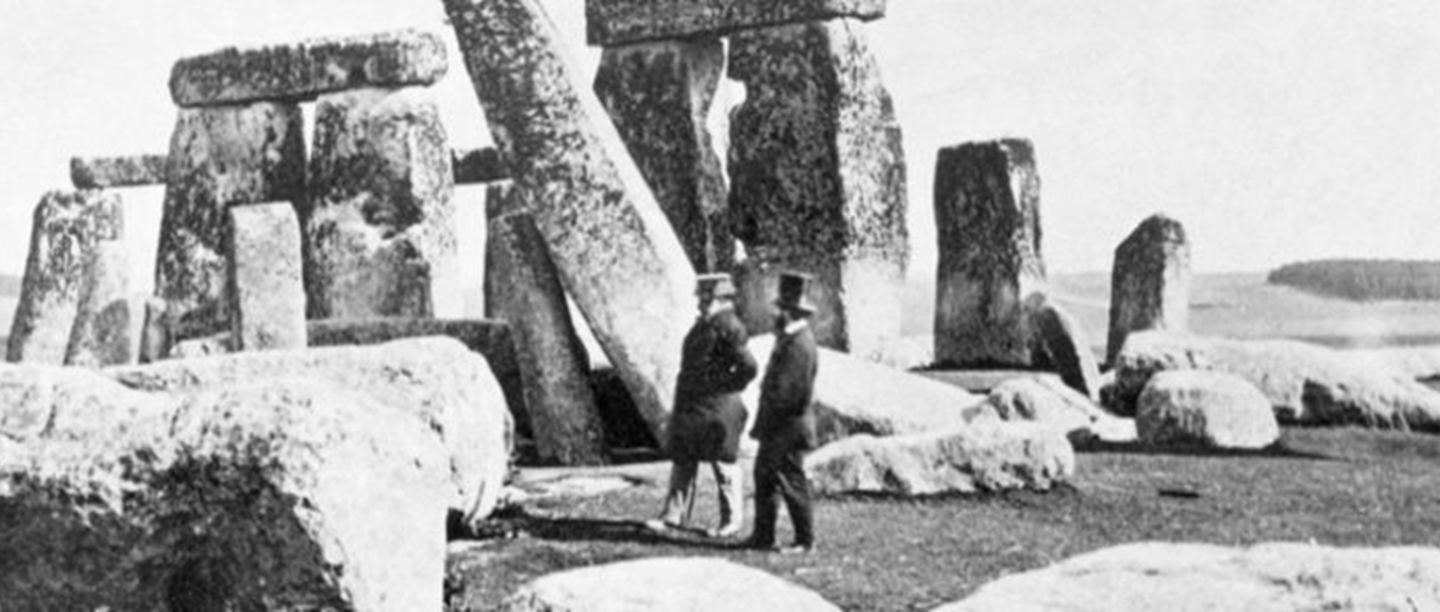
2018 marks an important anniversary for Stonehenge. It’s 100 years since local barrister Cecil Chubb and his wife Mary gifted the monument to the nation. This was a major turning point in the way Stonehenge was cared for. It set in train a programme of care and conservation for the monument and the surrounding landscape which continues to this day.
The need for care
Stonehenge had been privately owned since the 12th century. Cecil and Mary Chubb became its last private owners after buying the monument at auction in 1915. Prior to the sale, the Antrobus family had owned Stonehenge and taken steps to protect it since the early 19th century. They had appointed its first warden in 1822 and by the end of the 19th century instructions existed to protect the stones and surrounding ground from damage, and to stop visitors from lighting fires, chipping the stones for souvenirs, littering and scratching their names on the monument. In 1871 one visitor stated that the sound of the constant chipping of stone broke the solitude of the place.
Ten years later timber supports were needed to shore up those stones considered in danger of collapse. In 1883 Stonehenge was included in the list of monuments to be protected by the new Ancient Monuments Protection Act. However, this needed the permission of the landowner, and as Sir Edmund Antrobus was an outspoken opponent of the new act, he refused to place the monument in guardianship.
In December 1900 an upright sarsen stone fell, and the massive horizontal lintel it held in place snapped in two. This collapse, and the public outcry about it, marked a change in attitude towards Stonehenge. A fence was erected around the stones, an entrance fee introduced and a police constable appointed to oversee visitors to the site.
A gift for the nation
When the Antrobus family sold off their estates at auction in 1915, Stonehenge was purchased by a local couple, Cecil and Mary Chubb.
Three years later Cecil, apparently influenced by the Ancient Monuments Act of 1913, wrote to Sir Alfred Mond, the First Commissioner of Works, offering ‘this unique possession … to you … as a gift to be held for the nation’.
Sir Alfred accepted with great pleasure what he described as a monument of ‘unique importance’. He passed the news on to the King and the Prime Minister, who expressed his ‘deep appreciation’.
A deed of gift was signed at an official presentation ceremony at Stonehenge on 26 October 1918. Thanks to the Chubbs’ generosity, Stonehenge was saved for future generations.
The Office of Works (English Heritage’s predecessor) then began major conservation at monument. They restored many of the fallen stones and carried out surveys and excavations.
A century of care and conservation begins
After the First World War the Office of Works carried out a detailed survey of the monument. The first engineers’ report was a lengthy tome and provided a detailed account of each and every stone and the angles at which they stood. A programme of restoration began in 1919. The Inspector of Ancient Monuments Charles Peers stated:
‘the repair of a prehistoric monument is always a difficult matter … This is I think, the extent of repair that should be undertaken: stones that are merely leaning but not dangerously so, should be left as they are, and anything that could be possibly be considered as ‘smartening up’ of this venerable monument carefully avoided.’
Restoration began with the stones that were leaning the most, starting with Stones 6 and 7 of the outer sarsen circle. One leaned inward and the other outward, causing the lintel on top to be twisted out of position. The lintel was wrapped in felt, cased in a wooden frame and then lifted off the uprights. The uprights were cased up, supported on joists and jacked back to the vertical. Three successive lintels and uprights were straightened in the same way.
The restorers also wanted to re-erect one of the trilithons which had fallen in in 1797, but the money had run out. Excavations began around the same time and were directed by Lieutenant Colonel William Hawley. The Office of Works also began to consider the setting of the ancient monument. They diverted the road that ran through the bank and ditch, which had caused a lot of damage during the First World War.
Today, the ancient monument is looked after by English Heritage on behalf of the nation. Throughout 2018 we will be telling the story, decade by decade, of a century of care and conservation at Stonehenge since the incredible gift 100 years ago.


